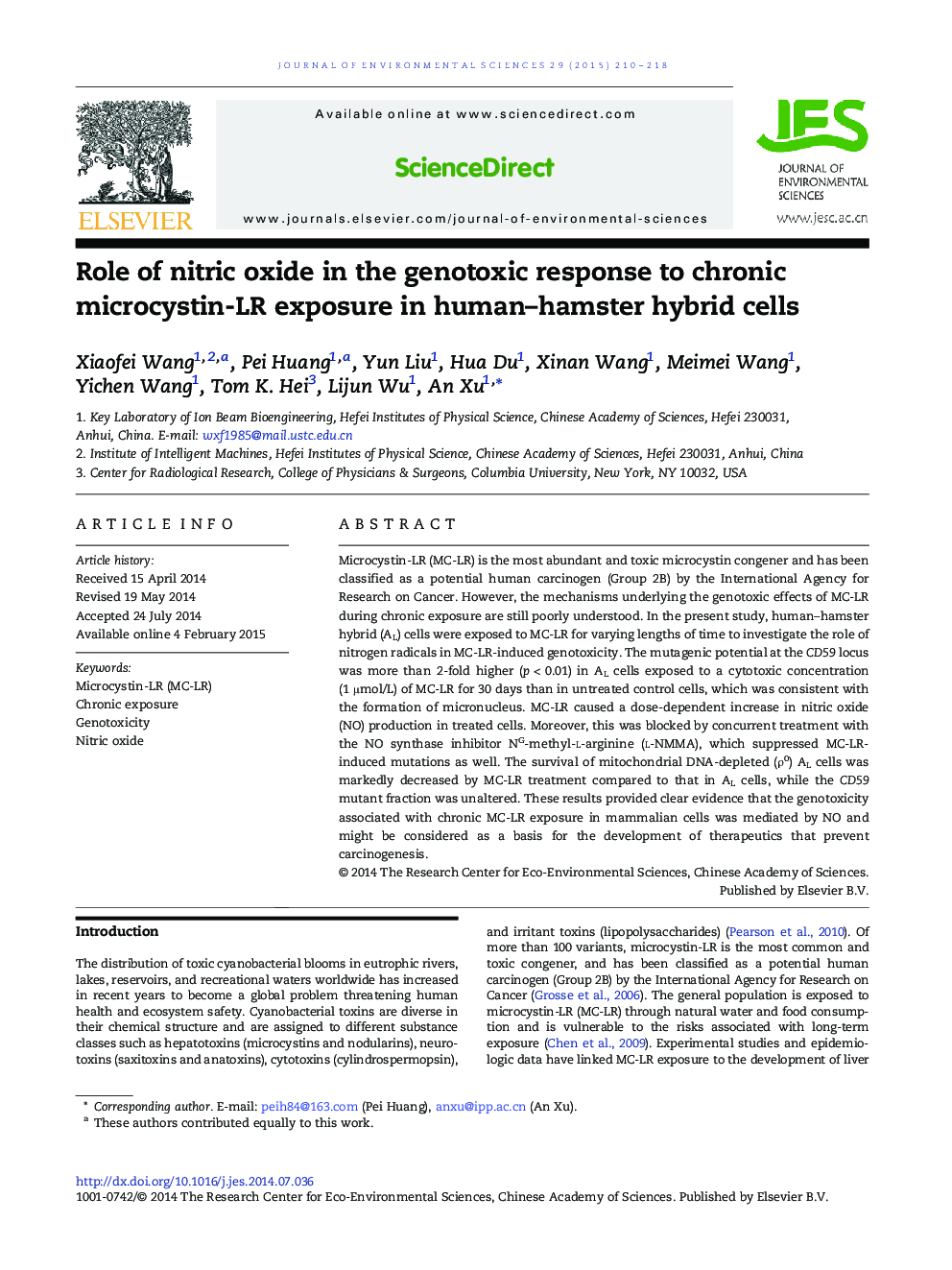| Article ID | Journal | Published Year | Pages | File Type |
|---|---|---|---|---|
| 4454226 | Journal of Environmental Sciences | 2015 | 9 Pages |
Microcystin-LR (MC-LR) is the most abundant and toxic microcystin congener and has been classified as a potential human carcinogen (Group 2B) by the International Agency for Research on Cancer. However, the mechanisms underlying the genotoxic effects of MC-LR during chronic exposure are still poorly understood. In the present study, human–hamster hybrid (AL) cells were exposed to MC-LR for varying lengths of time to investigate the role of nitrogen radicals in MC-LR-induced genotoxicity. The mutagenic potential at the CD59 locus was more than 2-fold higher (p < 0.01) in AL cells exposed to a cytotoxic concentration (1 μmol/L) of MC-LR for 30 days than in untreated control cells, which was consistent with the formation of micronucleus. MC-LR caused a dose-dependent increase in nitric oxide (NO) production in treated cells. Moreover, this was blocked by concurrent treatment with the NO synthase inhibitor NG-methyl-l-arginine (l-NMMA), which suppressed MC-LR-induced mutations as well. The survival of mitochondrial DNA-depleted (ρ0) AL cells was markedly decreased by MC-LR treatment compared to that in AL cells, while the CD59 mutant fraction was unaltered. These results provided clear evidence that the genotoxicity associated with chronic MC-LR exposure in mammalian cells was mediated by NO and might be considered as a basis for the development of therapeutics that prevent carcinogenesis.
Graphical abstractFigure optionsDownload full-size imageDownload as PowerPoint slide
